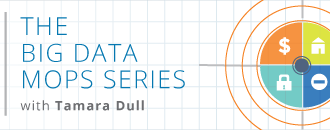Wayne, research director at TechTarget in Boston, writes:
Wayne, research director at TechTarget in Boston, writes:
One of the most salient features of performance dashboards are the “three threes”: three applications, three layers, and three types. The “three threes” provide a convenient way to describe the major characteristics of performance dashboards and a litmus test to differentiate imposters from bona fide performance dashboards.
Wayne breaks a performance dashboard into three integrated application components:
- Monitoring application for conveying information at a glance (dashboards for operational processes and scorecards for strategic goals)
- Analysis application for exposing exception conditions and allowing the user to drill into details
- Management application for improving alignment, coordination, and collaboration
A dashboard can also be segregated into three different informational layers:
- Monitoring information utilizing graphical, metrics data for executives
- Analysis information utilizing summarized, dimensional data for analysts
- Detail information utilizing transactional data for workers
Lastly, Wayne outlines three types of dashboards:
- Strategic dashboards for executives (often using the Balanced Scorecard methodology)
- Tactical dashboards for departmental processes and projects
- Operational dashboards for front-line workers utilizing detail transactional
There is plenty of overlap between Wayne’s three informational layers and three types of dashboards. We mess up his “three” paradigm, but we might combine things into a summary such as:
- Strategic Monitoring Dashboard for executives (highly graphical representative of metrics)
- Tactical Analysis Dashboard for departments and projects (summary with drill-to details)
- Operational Detail Dashboards for front-line workers (very current transactional data)
For more information, see Wayne’s book on Amazon.
By the way, if you are considering using WebFOCUS to build BI dashboards, be sure to see my other blog posting.







